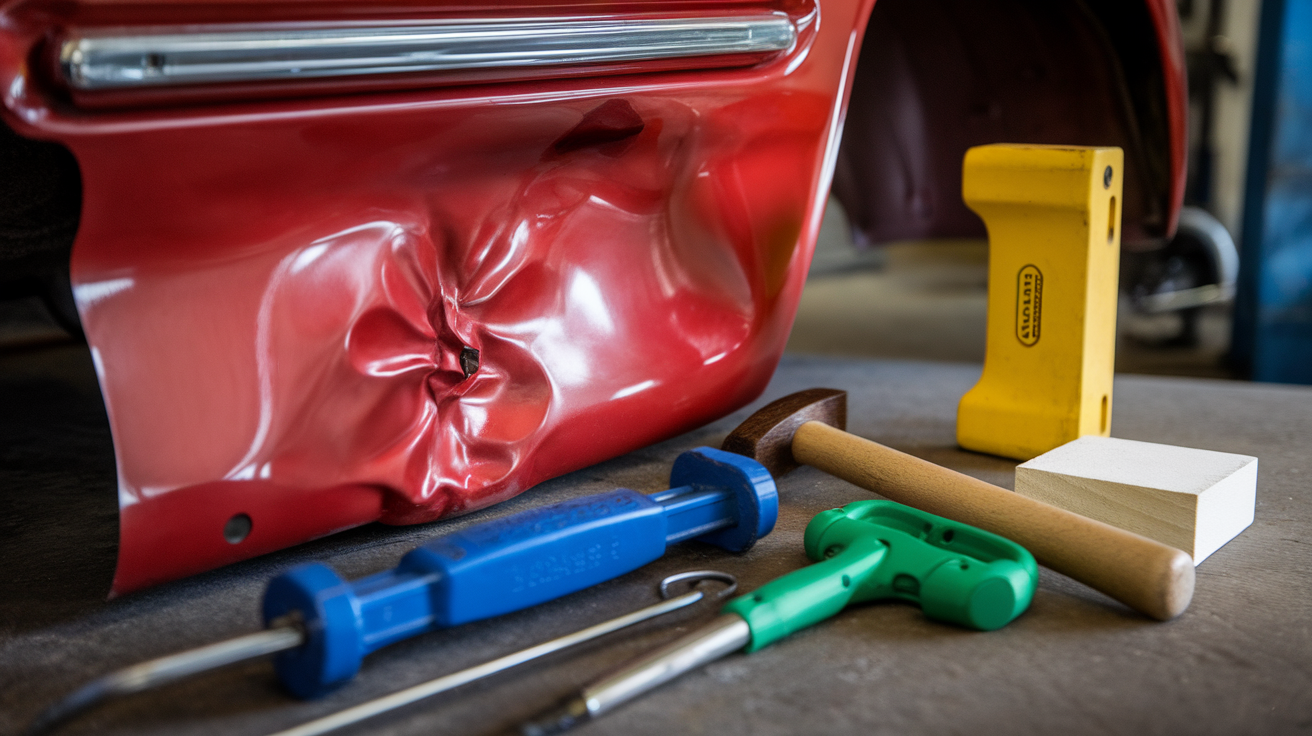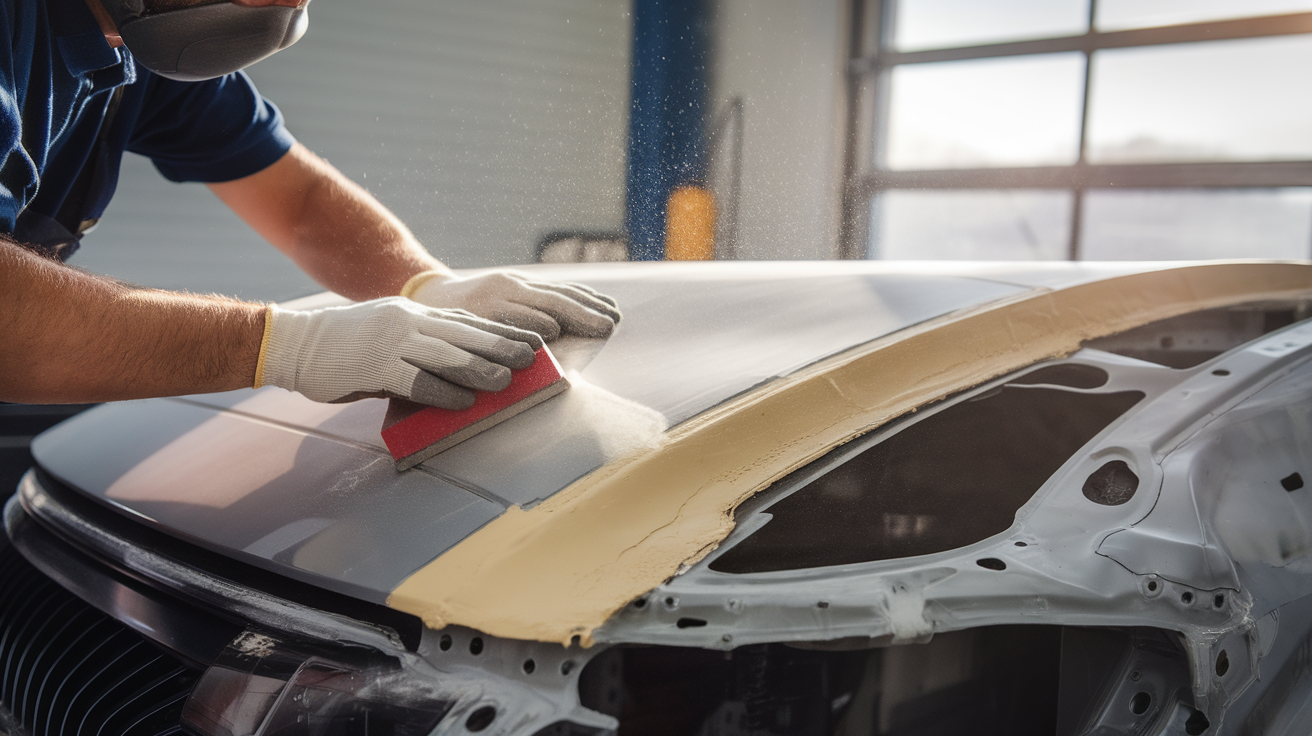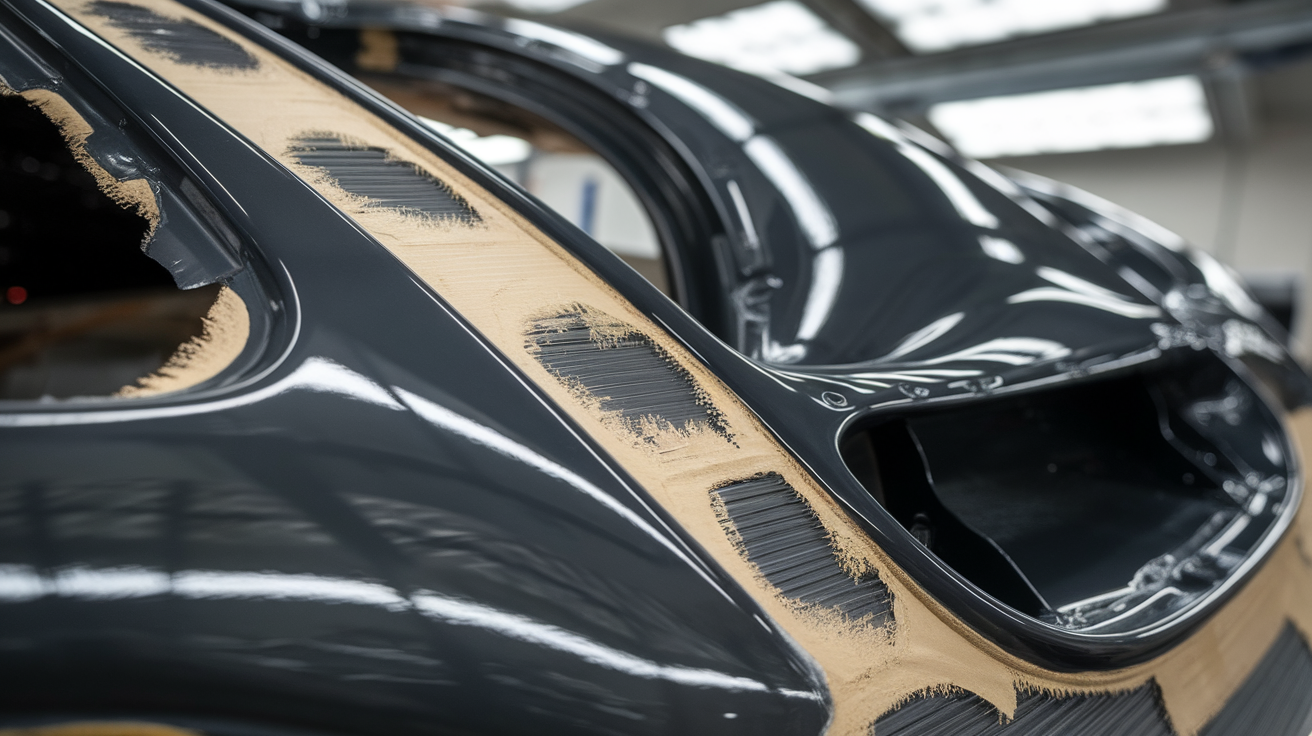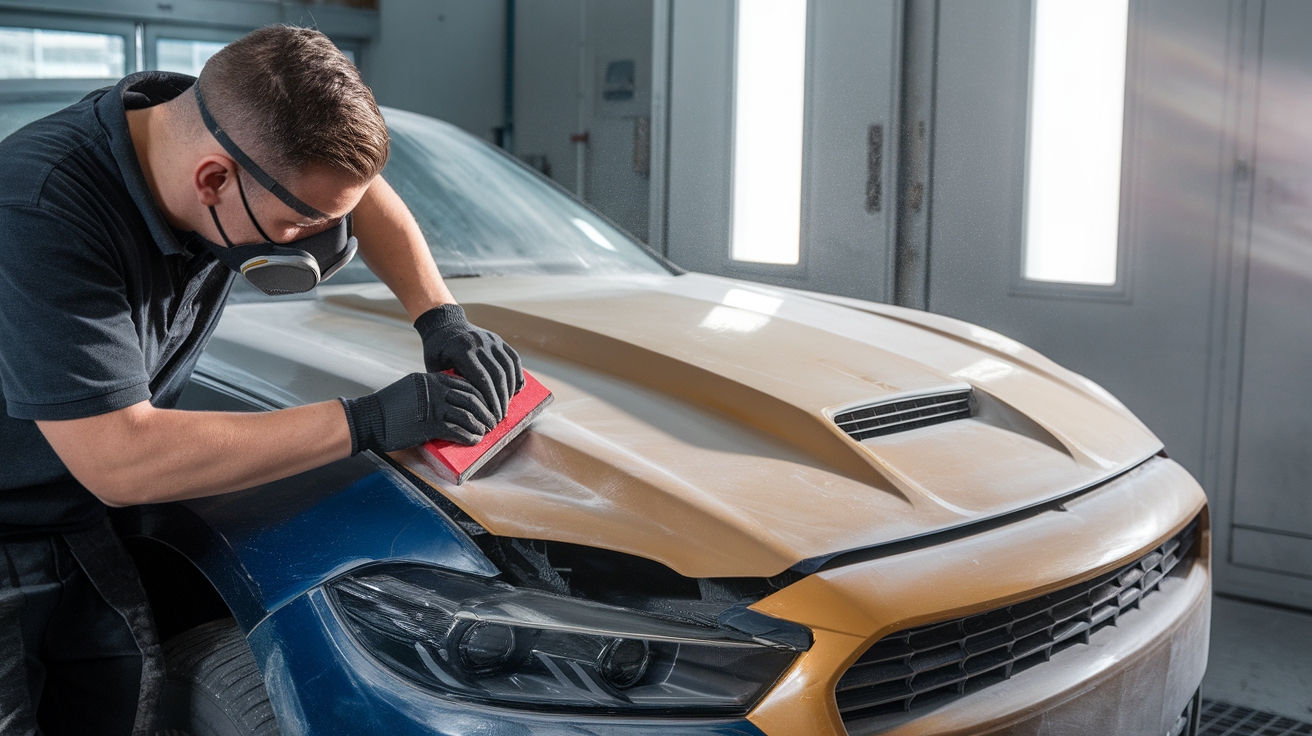Ever tried removing old paint from a car and felt like you were peeling off its history, layer by stubborn layer? It is not just about grabbing the nearest can of stripper and hoping for the best. One wrong choice, and you could end up with warped panels, melted bumpers, or worse, uneven scars that ruin the finish before it even begins. Picking the best paint stripper for your car is more than a task; it is a balancing act between chemistry, surface sensitivity, and method. This guide walks through it all, mistakes, tools, and real results.
Why You Might Need a Car Paint Stripper
Sometimes, old paint just refuses to let go. And if you force it, the surface underneath might suffer. Whether you’re restoring, repainting, or fixing past damage, there’s always a point where a car paint stripper becomes not just useful, but necessary. Here’s why you might end up reaching for one:
- Faded or Damaged Paint Needs a Fresh Start
Over time, sun and sand wear down paint layers, especially in Dubai’s harsh climate. A car paint stripper helps remove the old coat cleanly so you can prep for a smooth, even respray. - Peeling or Bubbling After a Bad Respray
Not all paint jobs are done right. If yours starts to flake or bubble, it’s safer to strip it down than paint over it. Left untreated, it can crack further or trap moisture underneath. - Classic Car Restoration Projects
Restoring an older car often means removing multiple paint layers from different decades. A proper paint stripper for cars makes that easier, without damaging original body lines or rare panels. - Fixing Previous Body Filler or Repair Work
Hidden filler, poorly blended edges, or uneven surface prep? Stripping reveals what is underneath so you can correct it before repainting. - Switching Paint Colors Completely
Changing from dark to light colors (or vice versa) requires full removal of existing paint to avoid bleed-through or uneven tone. A car paint remover ensures clean results. - Rust or Corrosion Under the Paint
Sometimes, rust hides under glossy layers. Stripping the paint lets you reach the bare metal, treat corrosion properly, and prevent future damage.
Paint does not always tell the full story, but the surface underneath does. Stripping it properly is the first real step to doing it right the second time.

Types of Paint Strippers Used in Automotive Work
Peeling off paint from a car is not just about speed, it is about precision, safety, and surface compatibility. Each paint stripper for automotive use works differently depending on your goal, the material, and even the weather conditions. One mistake, and you could be sanding more than just old paint. Let’s break down the most common types used in real-world car refinishing:
- Liquid Chemical Paint Removers
These penetrate and lift multiple layers of paint quickly. Ideal for broad, flat panels like hoods and doors. But they’re strong, if left too long, they can eat into primer or soft metal. Car paint remover liquids need controlled application and timing. - Gel-Based Paint Strippers
Thicker than liquids, paint stripper gels stick better to curved surfaces and reduce mess. Great for vertical panels like doors and bumpers. They work slower but offer better control, especially for sensitive trims. - Abrasive Removal (Sanding & Blasting)
DA sanders, sanding blocks, or media blasting tools strip paint by force rather than chemistry. This is best for surfaces with rust or heavy filler, but overuse can distort body panels or leave swirl marks if rushed. - Heat Guns & Thermal Stripping
These soften the paint using controlled heat, allowing you to scrape it off. Cheap but risky. Too much heat on plastic parts or thin sheet metal can lead to warping or blistering. - Eco-Friendly Water-Based Strippers
Slower but safer, especially indoors or in Dubai’s tight garages. Eco-safe car paint strippers are often used on aluminum or plastic body parts where strong chemicals might cause damage.
Every method has its place, but not every method belongs on your car. The key is knowing when to use each, because paint is easy to strip, but damage is not easy to undo.
Pros & Cons of Each Paint Stripping Method
Stripping paint from a car sounds simple, until you realize each method comes with trade-offs. Go too aggressive, and you might damage the panel. Pick something too mild, and you’re left scrubbing for hours. It is not just about getting the paint off, it’s about how you do it and what you’re working on.
Here’s a no-fluff look at the real pros and cons of each common method used in automotive paint removal. From chemical paint strippers to abrasive sanding and even thermal paint stripping, each one brings its own set of risks and rewards.
| Method | Pros | Cons |
| Chemical | Covers large areas quickly, works on layers | Hazardous fumes, requires good ventilation |
| Abrasive | Removes paint and rust at the same time | Risk of scratching or thinning the metal |
| Thermal | No chemicals, reusable tools like heat guns | Can warp plastic and curved body panels easily |
There is no universal “best” paint stripper, only the best for your situation. One method may work wonders on a steel hood but ruin a plastic bumper. If you’re not sure, test on a hidden spot first. Once the damage is done, no method can undo it. Heat-based stripping can also be paired with protective finishes, see why many shops recommend to install paint protection film after refinishing.

Choosing the Best Paint Stripper for Your Car
So you’re standing there, paint bubbling off your fender, or worse, refusing to budge at all, and wondering what went wrong. Maybe the paint stripper gel slid right off. Maybe the chemical paint stripper melted your plastic trim. Or maybe… you used the wrong product entirely. Truth is, there’s no “universal solution.” The best paint stripper for your car depends on more than just what’s on the label. Before you strip another inch of paint, run through these six critical filters:
- What Type of Paint Are You Dealing With?
Factory coatings, lacquer, or respray? Not all removers handle every kind of auto paint. Older cars often have layers stacked over decades, while newer ones use tougher modern coatings. - What’s the Surface Material?
Steel, aluminum, fiberglass, plastic, all react differently. For instance, abrasive paint removal can eat through thin panels. Chemical paint strippers may blister plastic or rubber trims. Match the stripper to the surface. - How Many Layers of Paint Are On the Vehicle?
One thin coat peels easily. Five layers with filler underneath? That is a whole different game. Thicker coatings might need a stronger solution, or a combination of methods. - Are You Working Indoors or Outdoors?
Solvent-based products demand airflow. If you’re in a closed garage, eco-friendly strippers or paint stripper gels with low fumes are safer. Dubai’s heat also speeds up drying, so timing matters. - How Fast Do You Need It Done?
Need results in 20 minutes? Liquid solvents might win. But if you want cleaner, safer work, even if it takes a bit longer, gel-based or water-based strippers might suit better. - How Much of the Car Are You Stripping?
Just the bumper? Or the whole body? For partial jobs, precise gel or sanding works. Full-body work often calls for something quicker and broader.
Choosing the wrong stripper is not just a waste of time, it’s a fast track to warped panels or damaged paint underneath. So slow down, check your surface, and pick what works best for your car, not what worked for someone else’s.
Common Mistakes People Make & How to Avoid Them
Paint removal looks easy, until you’re halfway through and your panel looks worse than when you started. One wrong move, and instead of prepping your car for paint, you’re prepping it for body filler and regret. These are the real-world mistakes people make with car paint strippers, and how you can dodge them before they cost you time, money, or metal.
- Using a Household Paint Stripper on Car Panels
Big mistake. Wall paint and automotive coatings are nothing alike. Products not made for car paint removal can ruin the surface underneath, or just not work at all. - Letting the Stripper Sit Too Long
People assume “longer means better.” Not here. Chemical paint strippers have a specific dwell time. Leave it too long, and it hardens or eats into the primer, especially on Dubai’s hot panels. - Skipping Surface Prep Before Applying Stripper
Dust, oil, or polish can block the stripper from reaching the paint. Wiping down the area first sounds obvious, yet so many skip it and wonder why nothing’s peeling. - Sanding Immediately Without Neutralizing
After chemical stripping, some products leave acidic residue. If you skip neutralizing, your fresh primer may bubble or peel later. Always read the instructions. Seriously, read them. - Using Metal Tools to Scrape on Plastic or Aluminum
Sounds faster, sure. But one slip with a metal scraper and you’re left with gouges on curved bumpers or lightweight fenders. Use plastic scrapers on soft materials. No exceptions. - Not Testing a Small Area First
This one stings. You apply to the whole hood only to realize the stripper reacts badly with the surface. Test a small patch, always. It’s not a waste of time. It’s insurance.
Every mistake here is real. Every one avoidable. And in automotive work, fixing the error takes three times longer than doing it right the first time. So breathe, prep, and treat every panel like it matters, because it does.

What Materials Respond Best to Which Stripper?
Not every surface on your car plays by the same rules. What works wonders on steel might warp a plastic bumper in minutes. If you’re serious about auto paint removal by surface, then knowing how each material reacts is not optional, it’s critical. Use this material-based paint stripper guide to match the right method to each surface and more importantly, know what to avoid.
| Material | Preferred Method | Avoid This |
| Steel Panel | Gel-based or controlled sanding | Intense heat (can warp thin spots) |
| Aluminum | Light chemical gel | Abrasive blasting (causes pitting) |
| Plastic Bumper | Soft gel or eco-based stripper | Any thermal method (melts easily) |
| Fiberglass | Eco-friendly liquid stripper | Aggressive sanding (damages the weave) |
Surfaces speak their language, you just need to learn how to listen. A steel door can take a little heat. A plastic bumper? Not even close. Stick to methods that match the material, and you’ll avoid the kind of damage that does not sand out.
Eco-Friendly Paint Strippers | Are They Worth It?
Let’s be honest, most people do not reach for an eco-friendly product unless they have to. Maybe it’s the fumes, maybe you’re working in a tight garage, or maybe you’re just tired of headaches from harsh solvents. Whatever the reason, eco-friendly car paint removers are becoming more common in the automotive world, but are they worth the switch? Here’s what no one really tells you:
- Less Harmful to You (and the Planet)
Most eco-friendly paint strippers are water-based or low-VOC, which means fewer harmful fumes and better indoor air quality, especially in closed garages or shared workshop spaces. - Slower Acting, But Gentler on Surfaces
These strippers tend to work slower than traditional chemical paint strippers, but they make up for it with control. If you’re working on plastic, aluminum, or fiberglass panels, the reduced strength helps avoid bubbling, warping, or chemical burns. - Safer for Indoor Work or DIY Projects
When ventilation is poor or you’re working near electricals or upholstery, these strippers lower the risk. They’re also easier to clean up, most rinse with water instead of neutralizer. - Better for Fragile Parts and Repeated Applications
Classic cars or older resprayed panels can’t always handle aggressive solvents. Eco-safe removers allow you to apply in stages, without overloading the panel. - Still Can’t Handle Heavy-Duty Jobs Alone
Let’s not sugarcoat it, they’re not magic. For cars with multiple thick coats, eco-friendly strippers may need multiple rounds or backup sanding. They’re effective, just not instant.
Tip: If you’re stripping a bumper, trim piece, or anything close to rubber seals, start with an eco-safe gel. You’ll save more than just your lungs. Eco-safe strippers are especially useful for interiors or trim near dashboards, where harsh solvents could damage finishes, our dashboard repair in Dubai shows how precision matters here too.”
So, are they worth it? If you’re working indoors, on sensitive surfaces, or just want a cleaner process. Just know what you’re trading: time for safety. And in most cases, especially in Dubai’s heat-heavy, enclosed garages, that trade is worth it.
Stripping paint off a car is not just prep; it’s where the real work begins. Choose wrong, and you’re not just peeling paint, you’re ruining panels, wasting hours, and spending more to fix what went wrong. Whether you’re using a chemical paint stripper, sanding it down, or testing eco-friendly options, it all comes down to knowing your surface, your goal, and your limits. Dubai’s climate, materials, and garage setups add even more layers to that decision. So don’t rush it. Strip small. Test often. And remember, the best paint stripper for your car is the one that gets the job done without damaging what is underneath.



